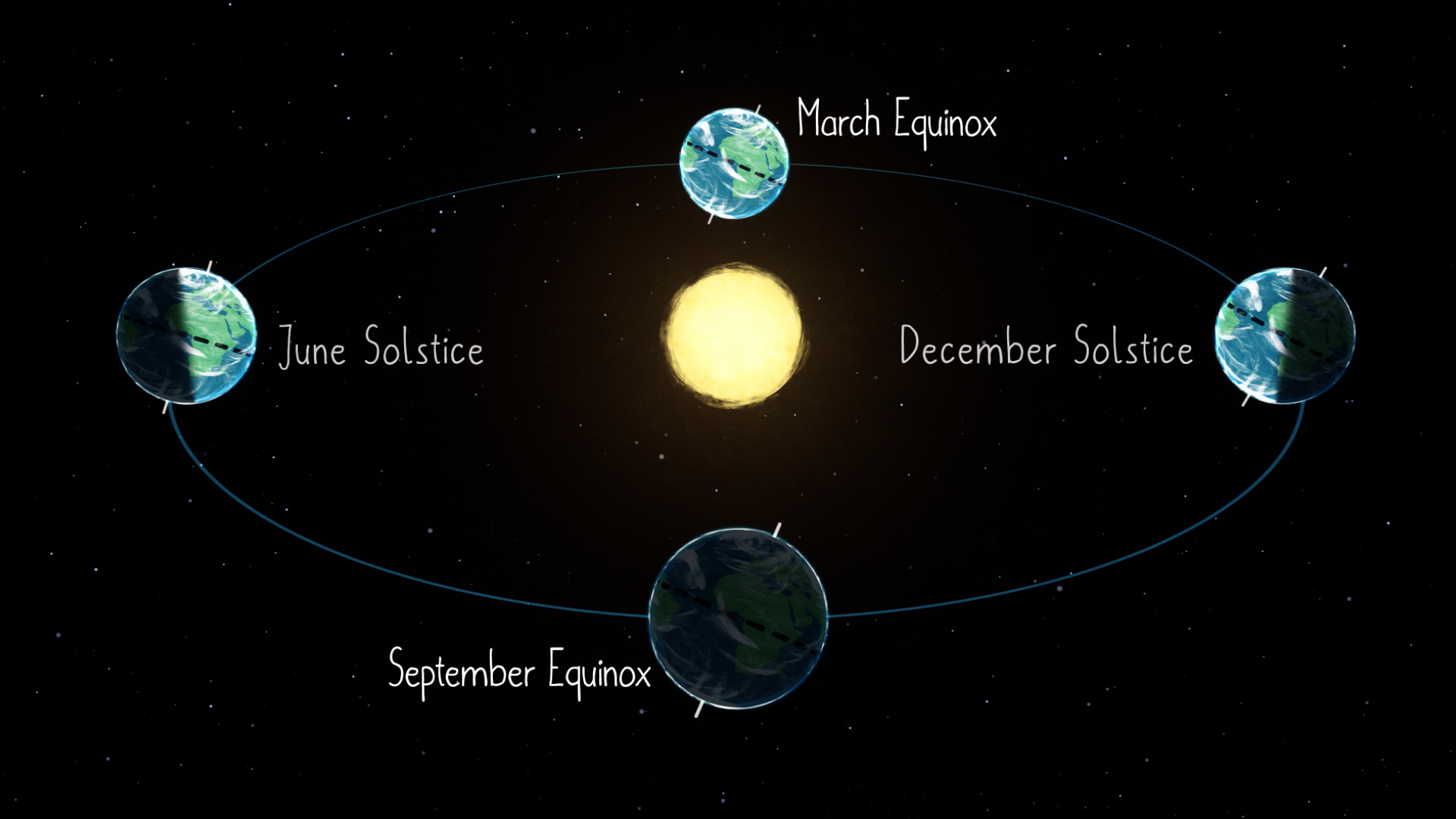Today, December 21, is the Winter Solstice, the Northern Hemisphere’s shortest day of the year. In the Southern Hemisphere, however, it was Summer Solstice, the longest day of the year.

What exactly is the Winter Solstice?
- The winter solstice, also known as the hibernal solstice, occurs when either pole of the Earth reaches its maximum tilt away from the Sun.
- This occurs twice per year, once in each hemisphere.
What are Solstices?
- Solstices occur because Earth’s axis of rotation is tilted about 23.4 degrees relative to the sun’s orbit.
- Our planet’s seasons are driven by this tilt, as the Northern and Southern Hemispheres receive unequal amounts of sunlight over the course of a year.
- The Northern Hemisphere is tilted more toward the sun from March to September, driving its spring and summer.
- The Northern Hemisphere is tilted away from the sun from September to March, making it feel like autumn and winter.
- The seasons in the Southern Hemisphere are flipped.
- The Earth’s axis is tilted most closely toward the sun at two points each year, known as solstices.

Impact on day-time
- The hemisphere with the greatest tilt toward our home star has the longest day, while the hemisphere with the greatest tilt away from the sun has the longest night.
- The Northern Hemisphere’s summer solstice—which always falls around June 21—is followed by the Southern Hemisphere’s winter solstice.
- Similarly, the Northern Hemisphere’s winter solstice—which always falls around December 22—is followed by the Southern Hemisphere’s summer solstice.
Impact of the tilted axis
- The Northern Hemisphere is tilted in the direction of the Sun for half of the year, receiving direct sunlight during long summer days.
- It tilts away from the Sun during the other half of the year, making the days shorter.
- On the Winter Solstice, December 21, the North Pole is most tilted away from the Sun.
- The tilt is also responsible for the various seasons that we experience on Earth.
- The side facing the Sun has day, which changes to night as the Earth spins on its axis.
Un-impacted regions
- Day and night are equal on the Equator. The more extreme the variation, the closer one gets to the poles.
- That pole is tilted towards the Sun during summer in either hemisphere, and the polar region receives 24 hours of daylight for months.
- Similarly, the region is completely dark for months during the winter.
In Vedic tradition
- The northern movement of the Earth on the celestial sphere is implicitly acknowledged in the Surya Siddhanta in Vedic tradition.
- It describes the Uttarayana (the period between Makar Sankranti and Karka Sankranti). As a result, the Winter Solstice is the first day of Uttarayana.
